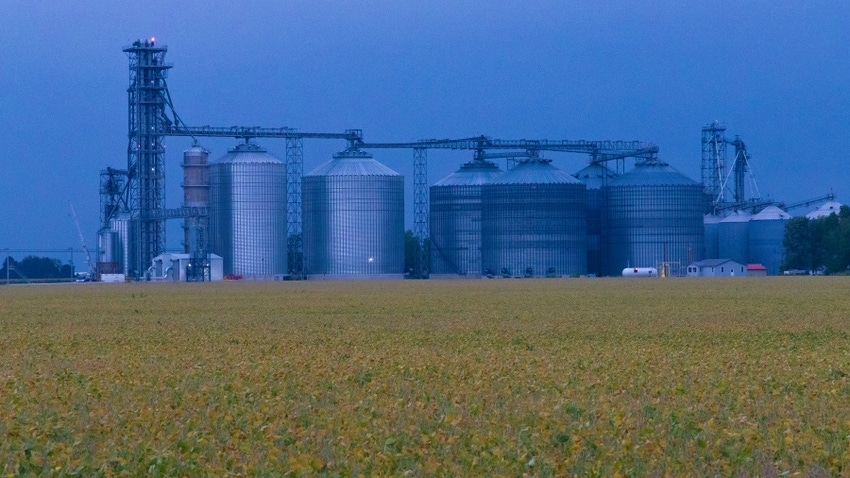
So what’s on the mind of some of the top farmers in the United States? At the Farm Futures Business Summit in early January in Coralville, Iowa, a host of topics were discussed. Farm Futures is a sister publication to Wallaces Farmer.
From interest rates to Russian wheat crops, here are some queries that farmers attending the summit posed to the experts:
When does the best basis occur? Have you ever heard the saying “Zig when others zag”? Well, that’s the way a tightening basis works.
“The best basis occurs in weeks like this when no one is moving grain,” said Steve Johnson, a private consultant who retired as an Iowa State University farm management specialist in 2021. Johnson was referring to the weather on Jan. 9, when Iowa was hit with up to a foot of snow.
“Basis also strengthens in springtime, when farmers are busy planting crops,” he said, adding that during these times, not as much grain is being shipped to processors, so basis tightens to ensure adequate grain supplies.
What will interest rates do in 2024? Although the Federal Reserve has held rates steady in recent months, it has raised interest rates 11 times since March 2022. Johnson said this has been in response to $6 trillion pumped into the economy by Congress and the Trump and Biden administrations in recent years.
So will the Fed reverse course and cut interest rates in 2024? Don’t bank on it, Johnson said. “A lot of people will play this a political game, and want to bring interest rates down,” he added. “But the feds will be hesitant to lower interest rates.”
Johnson said since the Fed was slow to the game to raise interest rates before 2023, it will be reluctant to lower them much in 2024.
Can Russia keep producing big wheat crops? The Russian situation is a reminder that any production region — including Iowa and its corn and soybean focus — can cruise along for years with good crops.
Until it stops. Suddenly. That’s because short crops eventually occur.
It hasn’t happened to Russia for a while. Ed Usset noted that even in the midst of a war with the Ukraine, Russia has consistently delivered big wheat crops to export customers for the past five to six years.
“They have had big crops and good yields,” said the University of Minnesota grain marketing economist. Even with war breaking out and Ukraine struggling to get wheat to market, Russia has stepped up with big surpluses and provided wheat and other grains to poor countries in Africa and Southeast Asia.
“They are filling a void because they have the grain,” Usset said.
Still, the Russian situation of bin-busting production is not normal. “So what happens one to two years from now if Russia has a bad crop and can’t step up?” Usset asked.
Wheat is often grown on marginal ground, and if adverse weather results in Russia, the resulting short crop could impact world grain supplies and prices.
“Russia can have some terrible wheat crops,” he said. “They have not had a bad crop for years, and they are due.”
Do seasonal grain market patterns change over time? In the case of soybeans, no. Usset looked back to 1980, when he was in graduate school. “Going back over 40 years, Brazil was not even on the landscape” for soybean production,” he said.
These days, Brazil is a huge player on the world soybean production and export scene. That’s coupled with the fact its production calendar is the exact opposite of soybeans in the United States, with Brazilian soybean production occurring at opposite times compared to the United States.
“Would you have not bet the farm in 1980 that this seasonal pattern would change?” Usset asked.
It hasn’t. The seasonal soybean pattern of fall lows and spring highs still consistently occurs. “In fact, it may even be stronger than 40 years ago,” he said. “If you look at the 1980s, the 1990s, even today, the same seasonal pattern still occurs.”
Can grain storage discourage forward selling? More times than not, the above seasonal pattern for soybeans — and corn — presents attractive options for forward selling months before harvest. Usset has observed the top forward sellers are those farmers who do not have on-farm storage.
“They have no Plan B,” such as on-farm storage, he said. Thus, they aggressively take advantage of selling opportunities ahead of harvest.
Farmers with ample storage have the same pricing opportunities but may delay them in hopes that prices will rise further. Storage is a Plan B that can cause farmers to pass on profitable selling opportunities, Usset said.
On a marketing basis, though, it’s tough to justify storage, he said. Bins can cost several dollars per bushel, which is difficult to make pay for dollars gleaned from selling stored corn and soybeans, he said.
However, adding bins for storage is often done for operational reasons, he said. Many small elevators have closed, and farmers are often miles away from larger elevators or ethanol plants. This makes it difficult to harvest a large crop and not incur delays.
Thus, whether or not to add storage often is an operational decision and not a marketing one, Usset said.
About the Author(s)
You May Also Like






